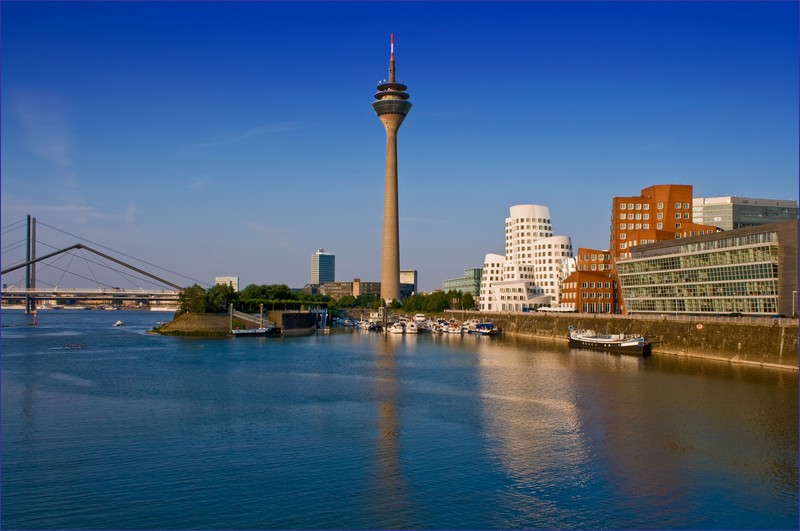Cologne is one of the largest German cities, heavily visited by tourists thanks to its beautiful cathedral located right next to the main train station and a vibrant city center full of tourist attractions. Cologne is also a major railway hub. Thanks to convenient connections with the rest of the region and country, it’s easy to plan day trips from Cologne by trin to destinations throughout the region and even to neighboring countries.
In this article, I’ve listed only the most important places that can be reached from Cologne by regional trains (S-Bahn, R, RE) within about two hours one way. Cologne is also served by many international trains, making it easy to get to cities like Paris, Brussels, or Amsterdam quickly. However, writing an article listing all those options would be too time-consuming.
Day trips from Cologne by train – Direction: Aachen
Langerwehe (optional) – This town is home to a Ceramics Museum. Nearby are several castles worth visiting, such as Laufenburg (4 km away), the private Holzheim Castle (viewable only from outside), and Merode Castle (also private, visible from outside). In nearby Wenau (5 km from the station), a 12th-century Premonstratensian monastery is the main tourist attraction. The area is ideal for scenic walks in nature.
Stolberg – A town of around 57,000 residents located a few kilometers from Aachen. Visitors can explore the Old Town. The main landmark is a castle built in the early 20th century on the site of a medieval fortress, now housing a regional museum. Other museums include the Zinc Mill Museum and the Museum of Medicine and Pharmacy. There are also many nature reserves and walking trails nearby.
Aachen – Located at the tri-border point between Germany, Belgium, and the Netherlands. Its symbol is the cathedral (modeled after San Vitale in Ravenna), featuring a treasury with artifacts like the Lothar Cross from around the year 1000. Other highlights include the 1330 town hall, the neoclassical Elisenbrunnen (mineral water hall), and preserved city gates Ponttor and Marschiertor. Don’t miss the International Newspaper Museum, the Suermondt-Ludwig Museum (fine arts), and Couven Museum, a restored 17th-century bourgeois residence.
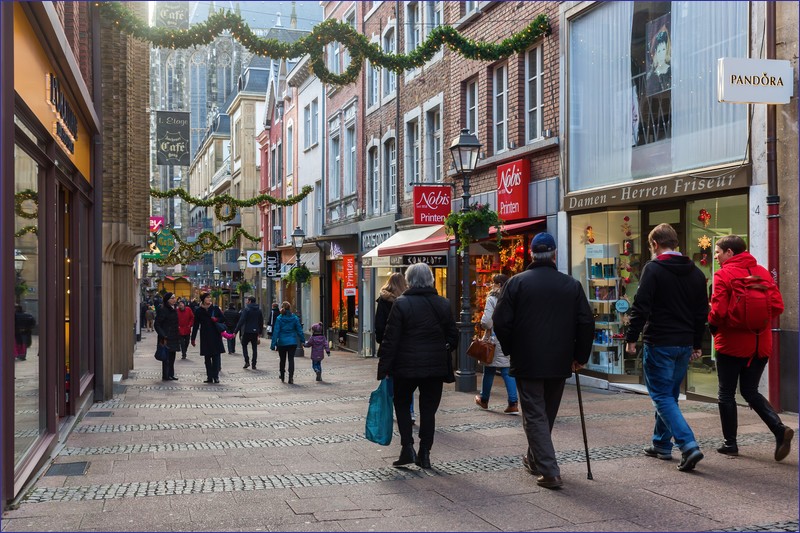
Verviers (optional) – A Belgian city with 55,000 residents. Visitors can explore the Old Town and several museums, such as the Wool and Fashion Tourist Centre housed in a former factory.
Liège – A large city not especially notable architecturally, but worth visiting for its stunning modern train station (Liège-Guillemins), citadel viewpoint, religious buildings like the Collegiate Church of St. Denis and the Basilica of St. Martin, and the famous Montagne de Bueren stairs. Notable museums include the Public Transport Museum, the Archéoforum (archaeological museum), the Museum of Walloon Life, and the Grand Curtius Museum.
Maastricht – One of the most charming cities in the Netherlands, with a rich history. The Old Town features the country’s oldest church (Sint Servaas Basilica, 6th century), many historic buildings including a 13th-century church converted into a bookstore, and remnants of city walls. Museums include the Maastricht Museum, Photography Museum, Bonnefanten Museum (art), Museum of Natural History, and the Printing Museum.
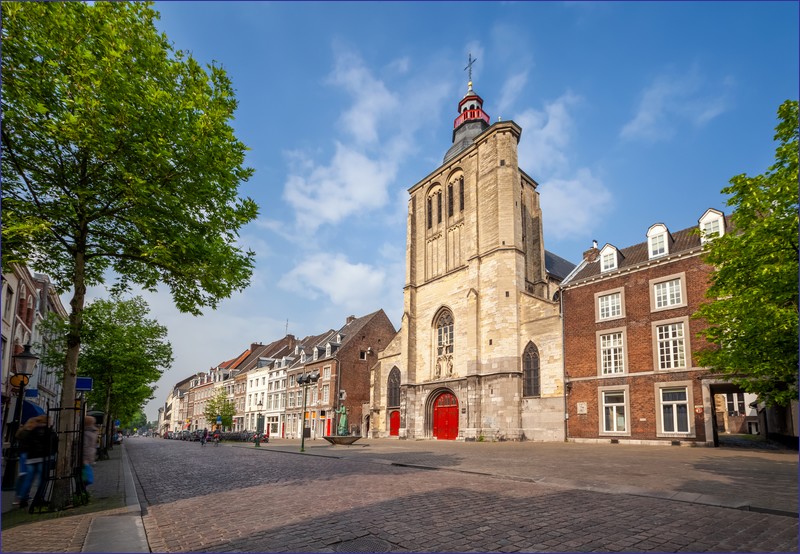
Direction: Siegen
Blankenberg – Around 2 km from the train station lie well-preserved castle ruins (free admission during article research). Only S-Bahn trains stop here. The adjacent town is one of the smallest in Germany and features city walls and half-timbered houses.
Schladern – Near the station, visitors can find castle ruins and a small village museum in Windeck.
Siegen – A picturesque city along the Sieg River, home to two castles. The Upper Castle houses a museum with paintings by Rubens, who was born here. The Lower Castle is a baroque palace used for administrative purposes. Despite losing 80% of its buildings in WWII, some churches survived, including St. Nicholas (13th c.) and St. Martin (11th c.). 10 km west lies Freudenberg, with its famous 1660 half-timbered Alter Stecken district and a Technology Museum (bus access).
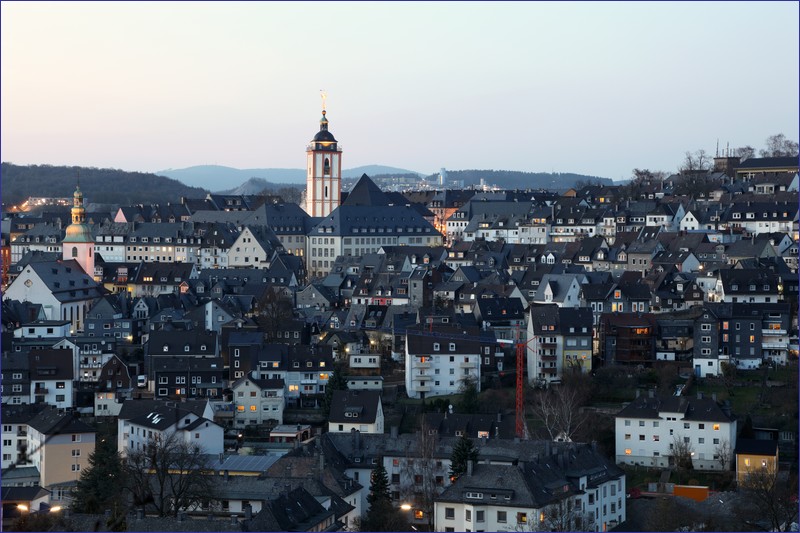
Direction: Koblenz
Troisdorf (optional) – An industrial town with the unique Museum of the Illustrated Book and a science center for children called Explorado. Nearby is the City and Industry History Museum.
Bonn – A university city and former capital of West Germany. Key landmarks include the Electoral Palace, the Rococo Old Town Hall, Hammerschmidt Villa (former presidential residence), and the Bonn Minster. The Old Cemetery is one of Germany’s most famous. Poppelsdorf is home to Clemensruhe Palace. The Bad Godesberg district features the Godesburg ruins. Must-see museums include the City Museum, the German History Museum, the University’s Mineral Museum, and the modern LandesMuseum Bonn. Don’t miss the treetop trail in Rabenlay for scenic views.
Königswinter (optional) – Known for hiking trails in the Siebengebirge mountains. Drachenfels (321 m) can be reached by Germany’s oldest cog railway. Highlights include Drachenburg Palace and ruins of Drachenfels Castle, tied to the Siegfried dragon legend.
Bad Honnef (optional) – A popular spa town and former home of Konrad Adenauer, often called the “Rhenish Nice.”
Linz am Rhein (optional) – A small town with a charming half-timbered center and relaxed atmosphere. The Powder Tower (Pulverturm) still stands, while the castle is not open to the public.
Koblenz – An important river port at the confluence of the Moselle and Rhine, and former residence of the archbishops of Trier. Though more industrial than historic, it features the Deutsches Eck (German Corner), a triangular plaza between the rivers, and several landmarks: the Teutonic Knights’ Ludwig Museum, St. Kastor’s Basilica, the Electoral Palace, the Church of Our Lady, the Jesuit Church, the Historiensäule column, and the impressive Ehrenbreitstein Fortress offering panoramic views. Museums include the Deutsche Bahn Railway Museum, the Koblenz Military Technology Collection, the Mittelrheinmuseum (art), and the Rhine Museum.
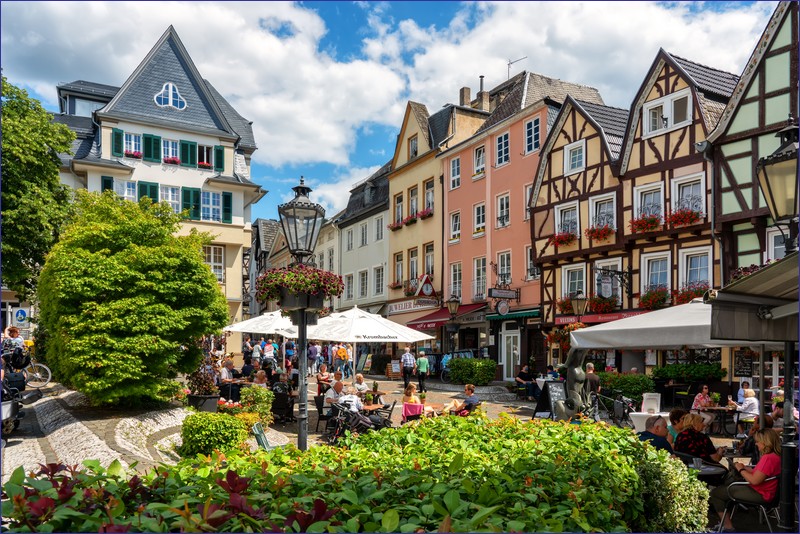
Direction: Brühl
Brühl – Near the train station lies Augustusburg Palace, one of Germany’s most beautiful baroque residences, built 1722–1739. Though damaged in WWII, it has been restored and can be toured with a guide. Falkenlust Hunting Lodge, built around the same time, is 2 km away. On the city outskirts is Phantasialand, the largest amusement park in the region.
Direction: Münster
Solingen – Known for its cutlery production. The main attraction is the German Blade Museum. Other highlights include the Museum of Industrial Plagiarism and a small zoo.
Wuppertal – Architecturally average but famous for its unique suspension railway (Schwebebahn). Highlights include a beautiful concert hall, the Von der Heydt Art Museum in the former town hall, and the Bible Museum. Nearby Neviges features a baroque pilgrimage church with a miraculous icon.
Münster – A beautiful city rebuilt after WWII. Its center resembles the Netherlands more than Germany. A short walk from the train station leads to the Erbdrostenhof Palace. The most important landmark is St. Paul’s Cathedral, featuring an astronomical clock. The rebuilt Old Town Hall houses a museum. Prinzipalmarkt is a narrow square lined with historic buildings. About 3 km from the center lies the stunning Wilhelm University building, surrounded by a botanical garden and park. A lakeside area (Aasee) features an open-air museum, zoo, and natural history museum with a planetarium.
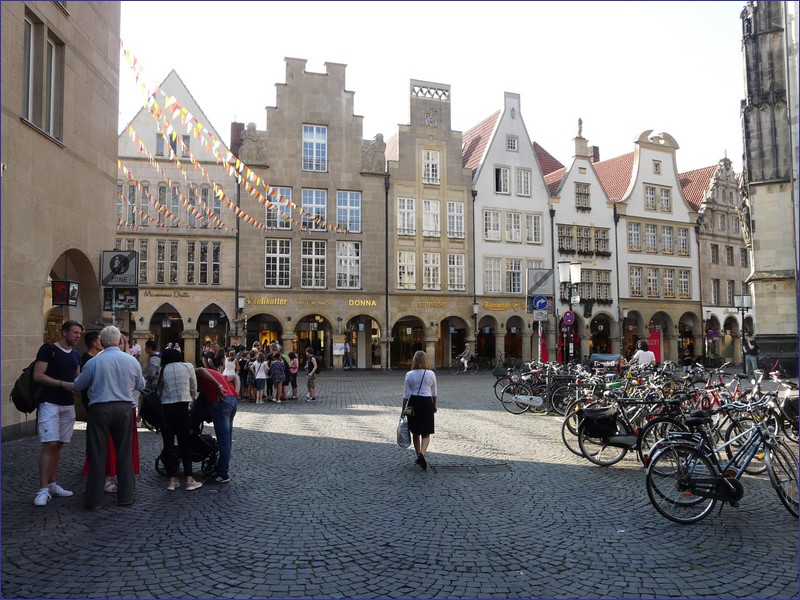
Direction: Düsseldorf
Düsseldorf – A vibrant university city, increasingly popular with tourists thanks to urban investments. One of Germany’s largest cities. Its small Old Town was mostly destroyed during WWII. Landmarks include the 16th-century town hall, the Castle Tower, St. Andrew’s Church, and the Collegiate Church of St. Lambert. Nearby is the Hofgarten park. Tourists enjoy walking along the Rhine promenade or taking a river cruise. Be sure to visit the Rheinturm (TV tower) viewing platform at 168 meters. In the Medienhafen district, modern architecture contrasts with historic buildings. Major museums include the City Museum, Film Museum, Theater Museum, and several art museums.
Related articles:
Train travel in Germany – a comprehensive guide
